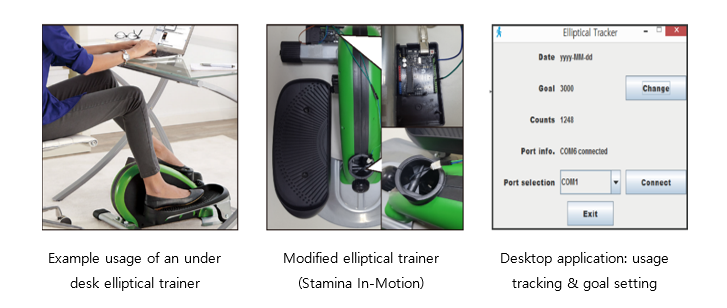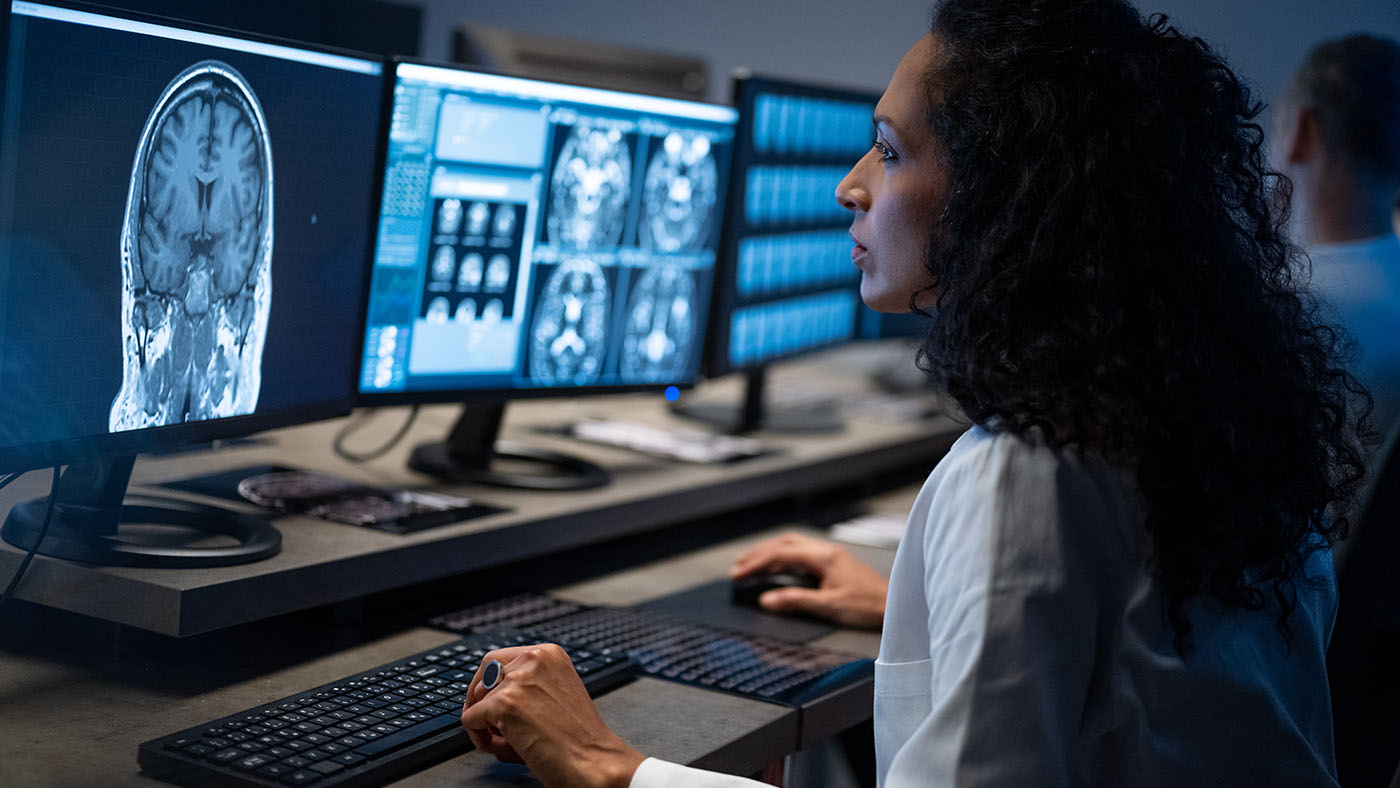By Miran Lee, Principal Research Program Manager, Microsoft Research
A field study exploring the usability of integrating fitness equipment into a workstation environment has researchers looking to tap next-generation machine learning innovations to address the seemingly elusive challenge of burning calories without ever leaving the desk.
Elliptical trainers small enough to fit under a desk may seem like a perfect way to stay fit and be productive at work. But until recently no one had really studied the viability of successfully doing both at the same time.
Spotlight: Event Series
Suspecting that it’s much harder than it looks, Uichin Lee, an associate professor at the Korea Advanced Institute of Science and Technology (KAIST), teamed up with Microsoft researchers in Asia to gauge how office workers integrated elliptical trainers into their workflow.
The research, “Exploring User Experiences of Active Workstations: A Case Study of Under Desk Elliptical Trainers” was presented September 15 in a session during the ACM International Joint Conference on Pervasive and Ubiquitous Computing (UbiComp 2016) in Heidelberg Germany.
The user experience (UX) study tracked 13 office workers over the course of a month and found they typically only used the elliptical trainers when performing simple office tasks or taking breaks. Some mostly used them as footrests or just to fidget. Although acknowledging the potential for improved health, participants noted any overall benefit comes at a cost of some leg room and “a fair amount of noise.”
But what if active workstations could be configured to fully track a user’s biometrics, workflow and other data streams to predict optimal times to work on any given task?
“Our next mission is to devise a novel persuasive computing system that can recommend the opportune moments for active workstation usage,” said Lee, who co-authored the paper with KAIST colleagues Woohyeok Choi and Aejin Song in collaboration with Darren Edge and Masaaki Fukumoto of Microsoft Research Asia.
For recommendation algorithm design, Lee and his team will consider multidimensional data, including computer usage, individual physiological/physical states and environmental sensor data. Owing to its wide variety of available sensing data, Microsoft Band 2 will be used to collect physiological/physical data such as heart rate, galvanic skin response, skin temperature and 3-axis linear/rotational acceleration. The team will continue to use Microsoft Azure to manage and analyze the multidimensional data for machine learning.
Lee, whose Interactive Computing Lab at KAIST covers topics like social computing systems and vehicular sensor networking, was surprised by the lack of UX research for active workstations. “This rapidly growing field has somehow received little attention from HCI [human-computer interaction] researchers,” Lee stated. “UX research will be beneficial to a broad range of stakeholders, including end users, researchers and device designers. Moreover, this will open up many other research opportunities in this field, such as active workstation design, workout intervention software design, and interactive workplace design.”
The project was the latest of several collaborative efforts with HCI researchers Edge and Fukumoto including the group swimming “exergame” SwimTrain.
To conduct the field study, researchers modified existing Stamina InMotion elliptical trainers to support usage tracking and goal setting features. A microcontroller was attached to the trainer to sense pedal spinning while an app displayed the total daily steps in real time with options for users to set daily activity goals. Participants were all graduate students employed in office environments with an average daily sedentary working time of 8.7 hours.
During the study, the team collected usage logs that showed “participants performed an average of 2,690.8 strides for an average 38.4 minutes on work days. Five participants failed to complete 3,000 strides per day, and the others took 43.0 minutes to meet their daily goals.”

Researchers obtained direct feedback via weekly surveys and a final interview with each participant at the study’s conclusion. The interviews showed that work contexts such as the urgency of requests and their cognitive load were the main factors in choosing whether to work and pedal at the same time.
One participant commented: “I pedaled this machine while surfing the web or watching sports videos on YouTube during a rest […] I may pedal when doing familiar tasks. For example, when reading an academic paper in a familiar domain, pedaling did not disturb me. However, it was difficult to comprehend a novel or an unfamiliar paper while using this machine.”
Using the trainer to combat drowsiness was among the most popular reasons to use the trainer, a majority of participants indicated.
“After eating a meal, I felt sleepy and could not concentrate on work,” a participant indicated. “So I used the machine to stay awake.”
Learn More





